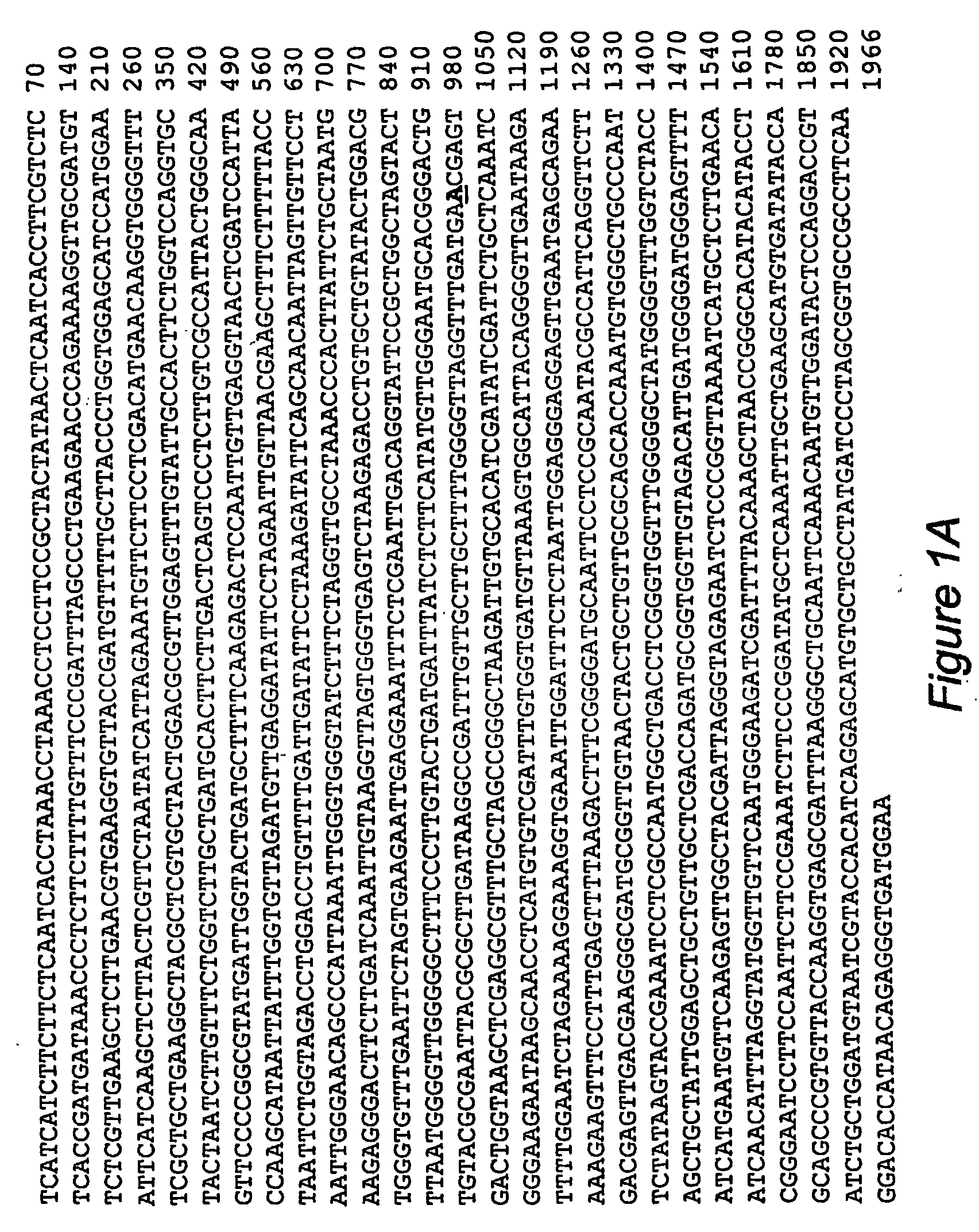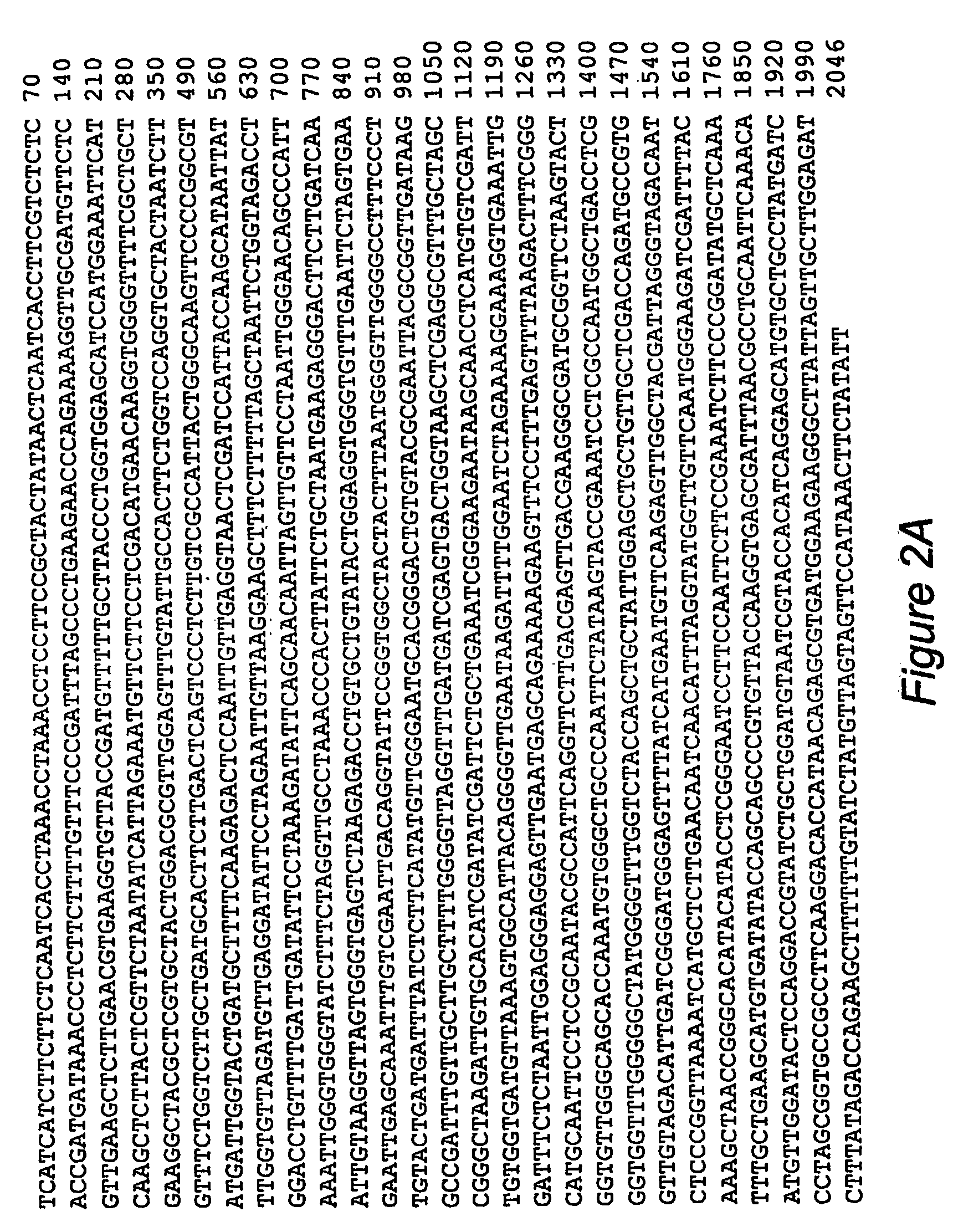Gene encoding resistance to acetolactate synthase-inhibiting herbicides
a technology of acetolactate synthase and gene encoding, applied in the field of gene encoding resistance to acetolactate synthase inhibitors, can solve the problems of limited use of these herbicides to tolerant crops, significant crop injury, and increased crop injury
- Summary
- Abstract
- Description
- Claims
- Application Information
AI Technical Summary
Benefits of technology
Problems solved by technology
Method used
Image
Examples
example 1
Characterization of ALS Resistance
[0035] Seeds from a smooth pigweed (Aniaranthus hybridus L.) population (R11-AMACH) were collected from a field in southeastern Pennsylvania where extreme ALS-inhibitor herbicide selection pressure was imposed over a several year period within continuous soybean production. R11-AMACH was selected naturally with ALS-inhibiting herbicides representative of the SU, IMI, and TP herbicide chemistries.
[0036] To establish levels and patterns of ALS resistance, R11-AMACH and an ALS susceptible smooth pigweed biotype (S-AMACH) were screened in the greenhouse with various rates of the ALS-inhibiting herbicides, chlorimuron (SU), thifensulfuron (SU), imazethapyr (IMI), pyrithiobac (POB), and cloransulam-methyl (TP). Rates evaluated were based on a log10 scale that included 0, 1 / 100×, 1 / 10×, 1×, 10×, and 100×, where 1× corresponds to the normal use rate in the field. R11-AMACH responded differently to the rate increase as compared to S-AMACH. With all herbici...
example 2
Isolation and Sequencing of Herbicide-Resistant ALS Enzymes
[0042] To establish why R11-AMACH exhibited high-levels of resistance to four classes of ALS-inhibiting herbicides, ALS enzymes from R11-AMACH and S-AMACH were isolated and sequenced. The R11-AMACH nucleotide sequence is presented in FIG. 1a (SEQ ID NO: 1) and the corresponding protein in FIG. 1b (SEQ ID NO: 2). The nucleotide sequence of S-AMACH is presented in FIG. 2a (SEQ ID NO: 3) and corresponding protein in FIG. 2b (SEQ ID NO: 4). No nucleotide differences were observed between R11-AMACH and S-AMACH in any of the five previously reported conserved domains known to confer ALS resistance in higher plants. However, a single amino acid difference was discovered in the R11-AMACH biotype ALS that occurred in a conserved region previously unreported to confer ALS resistance in higher plants (FIG. 3, SEQ ID NO: 5). This region consists of the amino acid residues, GVRFDDRVTGK, (SEQ ID NO: 6) which are identical to that of corn...
example 3
[0044] The enzymes from R11-AMACH and S-AMACH were purified and assayed to establish activity and resistance characteristics on the enzyme level. Purification was accomplished by methodology similar to that of Hill et al., (1997). Briefly, large quantities of the enzyme were produced in an expression vector in E. coli in which the recombinant protein was fused to a 6× histidine tag (HIS). Cells were lysed, and the soluble protein fraction purified by differential centrifugation and subsequently passing the protein solution over a nickel column to bind the HIS tag. The ALS protein was eluted from the column, the HIS tag cleaved and the final ALS protein purified from small impurities by passage over a size exclusion column. Activity was assayed using the discontinuous colorimetric assay as described by Singh et al. (1988).
[0045] The results showed that resistance levels of R11-AMACH enzyme to SU, IMI, POB, TP and sulfonylamino-carbonyl-triazolinone herbicides w...
PUM
| Property | Measurement | Unit |
|---|---|---|
| Electrical resistance | aaaaa | aaaaa |
Abstract
Description
Claims
Application Information
 Login to View More
Login to View More - R&D
- Intellectual Property
- Life Sciences
- Materials
- Tech Scout
- Unparalleled Data Quality
- Higher Quality Content
- 60% Fewer Hallucinations
Browse by: Latest US Patents, China's latest patents, Technical Efficacy Thesaurus, Application Domain, Technology Topic, Popular Technical Reports.
© 2025 PatSnap. All rights reserved.Legal|Privacy policy|Modern Slavery Act Transparency Statement|Sitemap|About US| Contact US: help@patsnap.com



